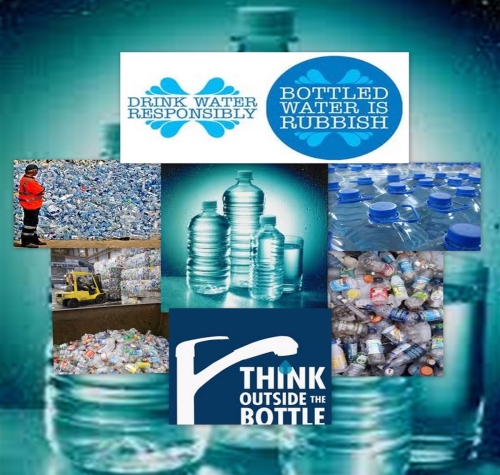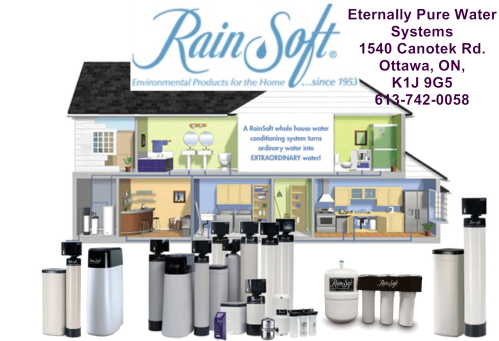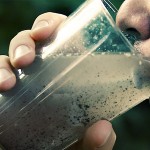 BOTTLED WATER IS COMING UNDER ATTACK ON COLLEGE CAMPUSES. To contact the reporter on this story: Andrew Theen in New York at atheen@bloomberg.net
BOTTLED WATER IS COMING UNDER ATTACK ON COLLEGE CAMPUSES. To contact the reporter on this story: Andrew Theen in New York at atheen@bloomberg.net
More than 90 schools, among them Brown University and Harvard University are banning the sale or restricting the use of plastic water bottles, unnerving the $22 billion retail packaged-water industry in the U.S. The University of Vermont is the latest to join the movement, announcing in January it would stop sales early next year.
 A forklift moves bails of plastic bottles at the San Francisco Recycling Center. More than 9 billion gallons of bottled water were sold in the U.S. last year.
A forklift moves bails of plastic bottles at the San Francisco Recycling Center. More than 9 billion gallons of bottled water were sold in the U.S. last year.
The industry is growing 5.4 percent annually. Photographer: Justin Sullivan/Getty
 Discarded water bottles lay in a trash can in Washington, D.C. Students at Brown, in Providence, Rhode Island, started a campaign to reduce bottled water consumption in 2010 and more than a dozen U.S. schools have campus-wide bans on the sale of plastic water bottles. Photographer: Karen Bleier/AFP/Getty Images
Discarded water bottles lay in a trash can in Washington, D.C. Students at Brown, in Providence, Rhode Island, started a campaign to reduce bottled water consumption in 2010 and more than a dozen U.S. schools have campus-wide bans on the sale of plastic water bottles. Photographer: Karen Bleier/AFP/Getty Images

Freshmen at colleges across the country are being greeted with stainless-steel bottles in their welcome packs and encouraged to use hydration stations where free, filtered water is available. Brown, which used to sell about 320,000 bottles of water a year in vending machines and campus stores, ended sales in dining halls in 2010. Harvard and Dartmouth College are installing hydration stations in new buildings to reduce trash.
“The product just doesn’t make common sense,” Sarah Alexander, 20, an environmental-studies major at Hanover, New Hampshire based Dartmouth, said by e-mail. “Companies are taking something that is freely accessible to everyone on the Dartmouth campus, packaging it in a non-reusable container and then selling it under the pretense that it is somehow better than tap water.”
In response to the growing movement, the water industry released a video on YouTube last month poking fun at “Ban the Bottle,” an organization that advocates banning one-time-use plastic water bottles. The spot, which features “Star Wars”- like music and flashbacks of antiwar demonstrations, says bottled water is a safe, convenient product that is “one of the healthiest drinks on the shelf” and that its packaging is recyclable.
‘Serious Issues’
There “are really serious issues over here, and now you’re dealing with bottled water?” Joe Doss, president of the International Bottled Water Association, based in Alexandria, Virginia, said in a phone interview.
 While “there are anti bottled-water groups going from campus to campus,” Doss said he doesn’t consider it “a big threat” at this point.
While “there are anti bottled-water groups going from campus to campus,” Doss said he doesn’t consider it “a big threat” at this point.
More than 9 billion gallons of bottled water were sold in the U.S. last year, and the industry is growing 5.4 percent a year, according to Gary Hemphill, senior vice president of the Beverage Marketing Corp., a New York consulting firm. Sales to colleges and universities aren’t tracked separately.
The bottling industry may be worried about losing brand loyalty from college kids, said Eric Meliton, an industry analyst with Frost & Sullivan.
“If they lose that access, yeah, you would see a big drop-off on that demographic,” Meliton said in a phone interview. College students are “on the go, they’ve got backpacks and they may not choose to use bottled water.”
Saving Money
 Reducing or eliminating plastic bottled water saves students money and has the environmental benefit of reducing the need to truck bottles across the country, Niles Barnes, project coordinator with the Association for the Advancement of Sustainability in Higher Education, said in a phone interview.
Reducing or eliminating plastic bottled water saves students money and has the environmental benefit of reducing the need to truck bottles across the country, Niles Barnes, project coordinator with the Association for the Advancement of Sustainability in Higher Education, said in a phone interview.
“It’s a really tangible, sustainable activity that students can get behind,” Barnes said.
Students at Brown, in Providence, Rhode Island, started a campaign in 2010 to reduce bottled water consumption and the school stopped selling it in dining halls that September. Brown holds about 50,000 bottles in reserve in case of a natural disaster or to distribute at graduation or other events, Chris Powell, director of sustainable energy and environmental initiatives, said in an interview.
 “There’s an environmental impact to the waste” of disposable water bottles, Powell said. “We realized there were alternatives that we could put in place that everybody was agreeable to.”
“There’s an environmental impact to the waste” of disposable water bottles, Powell said. “We realized there were alternatives that we could put in place that everybody was agreeable to.”
Culture Shift
Dartmouth is trying to “shift the student culture” about purchasing bottled water, said Rosi Kerr, the school’s director of sustainability. Princeton University, in Princeton, New Jersey, promotes a “Drink Local” initiative to reduce plastic bottle waste.
Some departments at Cambridge, Massachusetts-based Harvard have banned the purchase of bottled water for meetings. Cornell University has a reduction campaign, as does Yale University.
 The University of Pennsylvania encourages administrative offices to use hydration stations rather than bottled water.
The University of Pennsylvania encourages administrative offices to use hydration stations rather than bottled water.
Sitting back and “doing nothing” as environmental groups campaigned to ban bottled water wasn’t an option for the water industry, the water association’s Doss said. His niece, a student at The College of Charleston, alerted him to an effort on her campus, and he said there is an “active movement” across the nation.
More than a dozen U.S. schools have campus wide bans on the sale of plastic water bottles, according to Barnes.
Sweetened Beverages
Some colleges with a history of activism have rejected bans on packaged water. The University of California, Berkeley opted against the idea on concern it would drive students toward sweetened beverages, said Trish Ratto, a university health services official. So did Columbia University, after students said they’d buy it elsewhere, according to Nilda Mesa, assistant vice president of environmental stewardship at the New York based college.
http://www.bloomberg.com/news/2012-03-07/ivy-colleges-shunning-bottled-water-jab-at-22-billion-industry.html
Brown philosophy major Terrence George, 21, calls the university’s policy an “unwarranted assault” on bottled water.
“The bottled water ban is downright absurd,” he said. “I’m buying apple juice and tea every night instead of water. Last time I went to the dentist, I have a few more cavities than usual.”
 Here are a few links both for and againstBottled Water Bans: (Some views also express the other side of the coin)
Here are a few links both for and againstBottled Water Bans: (Some views also express the other side of the coin)
http://www.youtube.com/watch?v=Iy5p7at7vf0
http://www.youtube.com/watch?v=ZZGDueSjf8o
http://www.banthebottle.net/
http://www.youtube.com/watch?v=JfgaIJ_LQzY
 Addicted to bottled water? You can save lots of money a month if you can kick your bottled water habit and start using good, old fashioned tap water. This infographic argues the point that bottled water isn’t any more superior than regular water and that we are all being conned by marketers to buy priced up water.
Addicted to bottled water? You can save lots of money a month if you can kick your bottled water habit and start using good, old fashioned tap water. This infographic argues the point that bottled water isn’t any more superior than regular water and that we are all being conned by marketers to buy priced up water.


















 Changes in the
Changes in the 



















